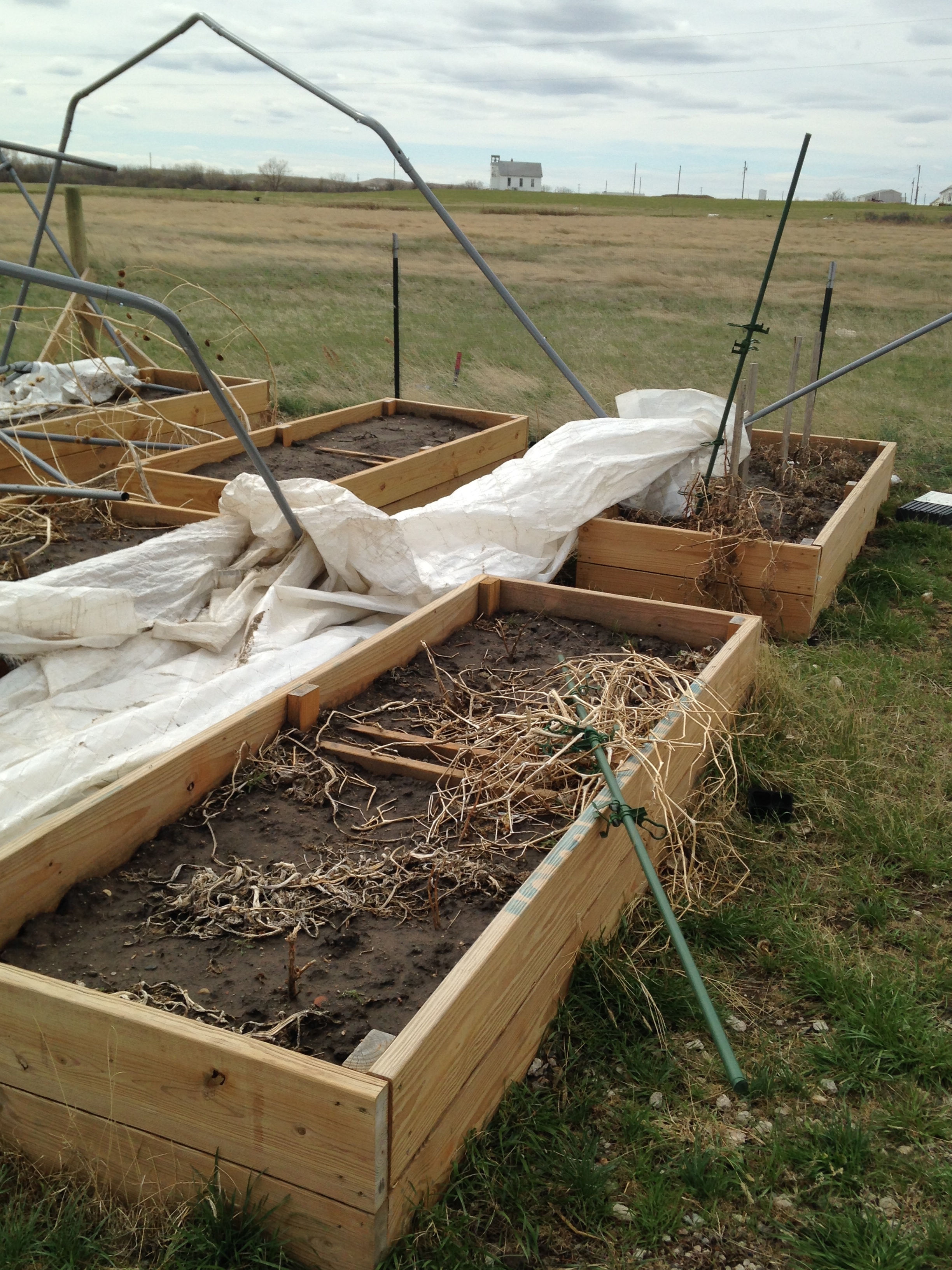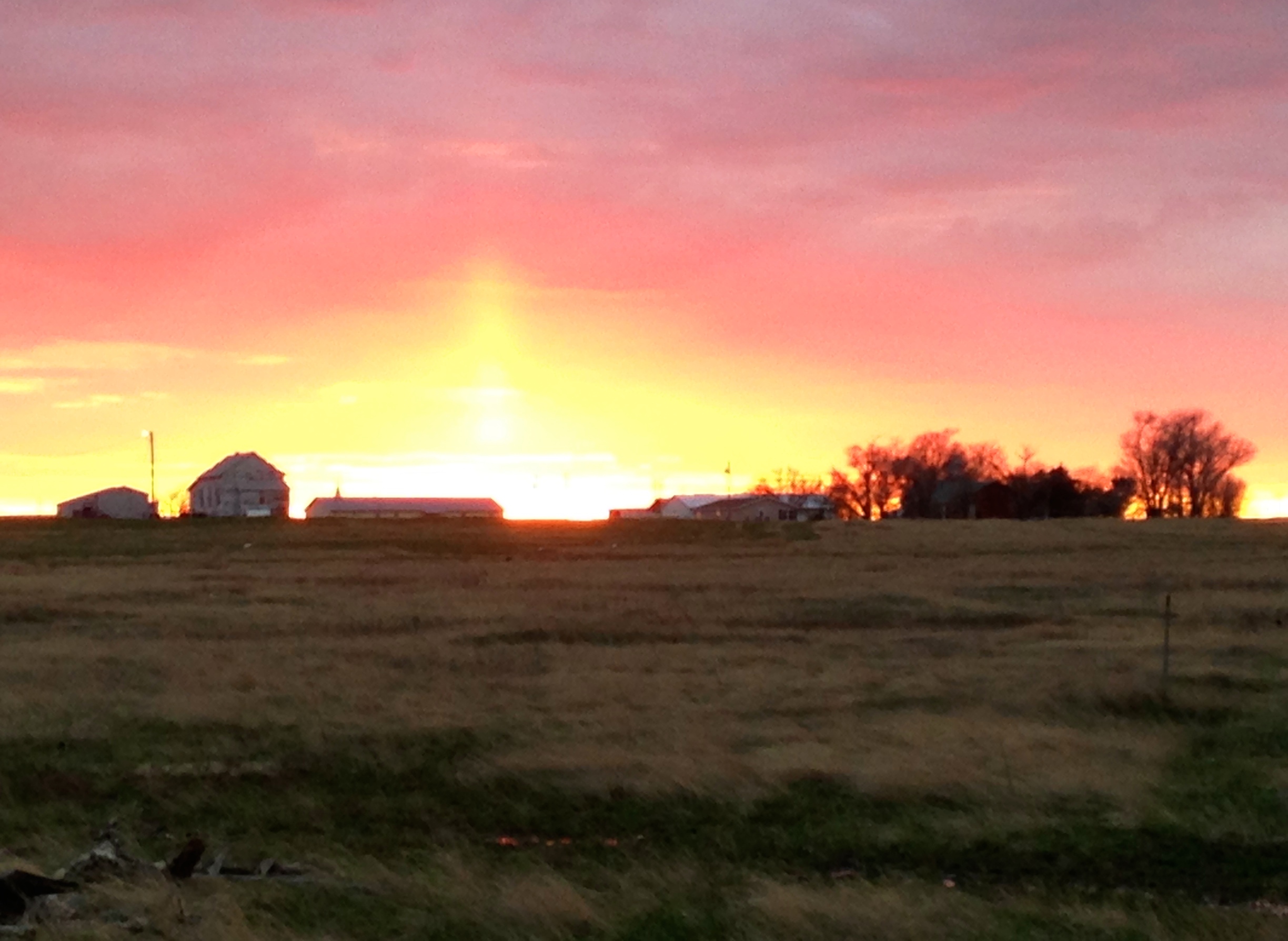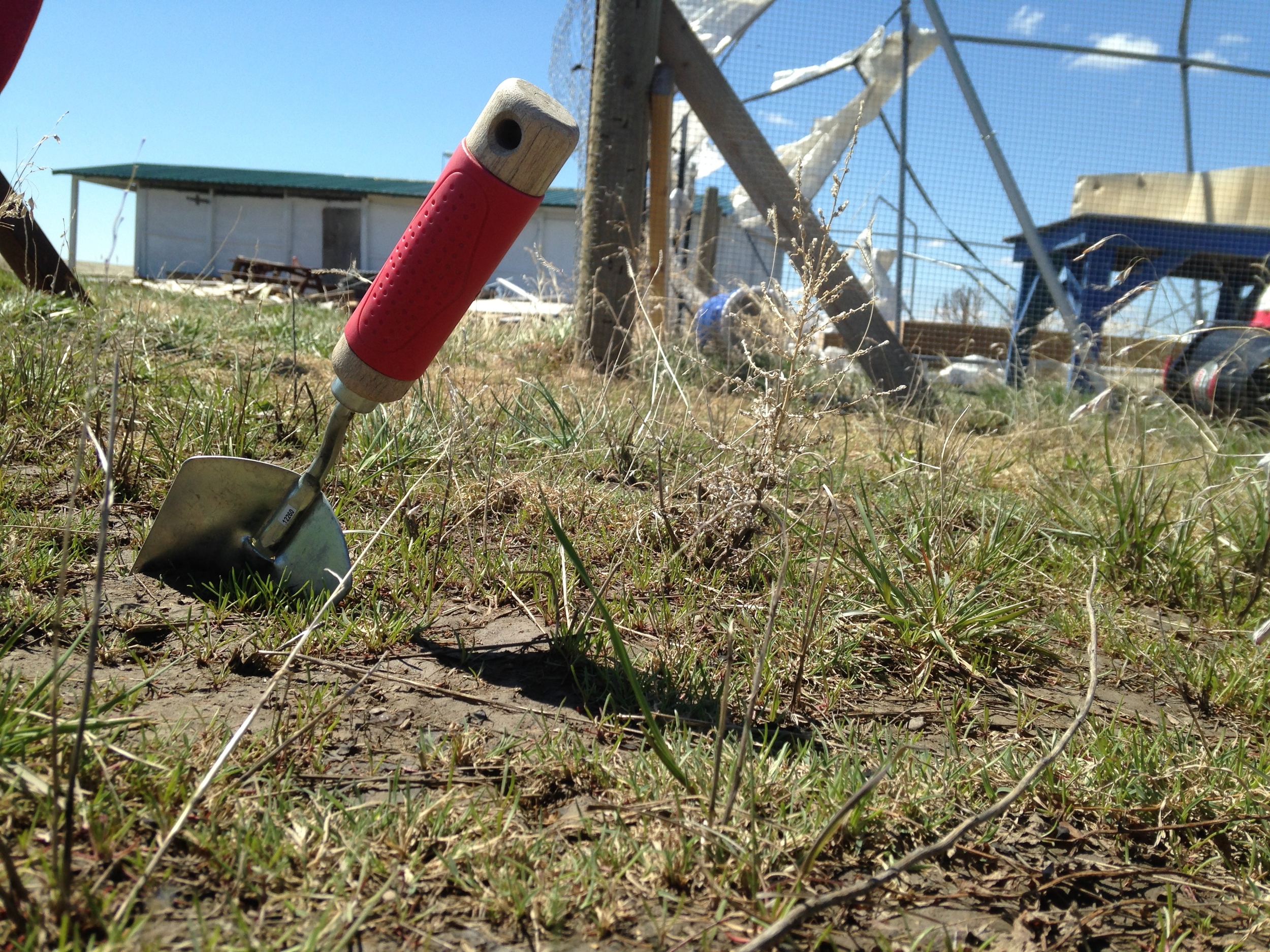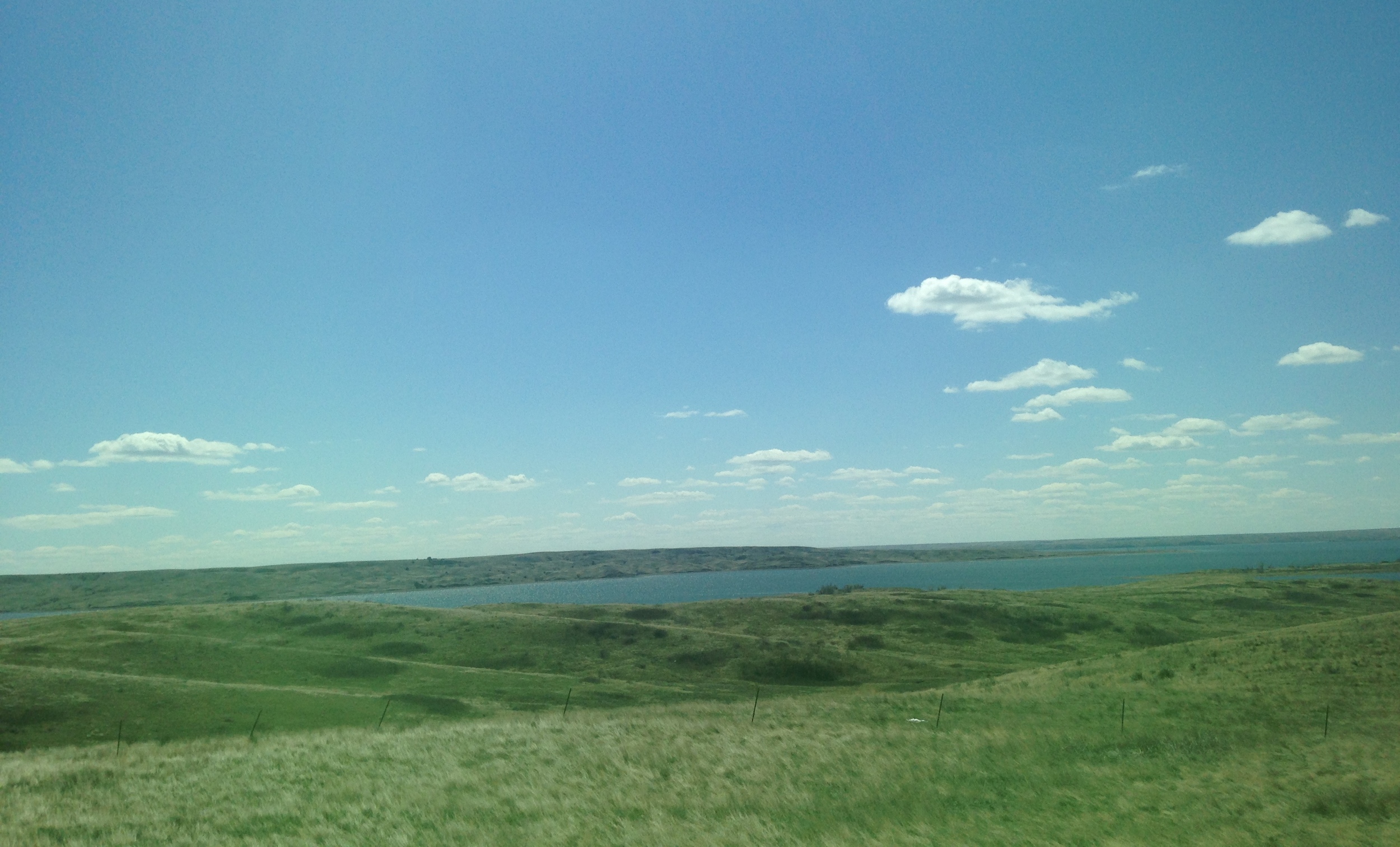My crusade against food waste and the primary reason behind this rant is largely shaped by my experience on the Cheyenne River Reservation. Hunger and poverty is rampant, and, as one young mom put it, "We live expensive, but you just don't see it."
"Our Bees, Ourselves" and what it means for the Rez
Sights from South Dakota
Watching a garden grow
“Food sovereignty is not just about food and medicine but about reclaiming our reverence for life.”
The shredded greenhouse tents in April. (April 2014, A.Gross)
Every week, the food and garden projects grow in La Plant. When we arrived on the Reservation at the end of April, we were welcomed by a dismal scene: dilapidated, shredded greenhouse tents, lots of debris scattered around the garden, cold temperatures and, of course, tons of muddy, gumbo soil. Yet, as June begins, the garden project is quite a different picture. It's one of progress, one of hope and one soon to be filled with delicious, nourishing food.
I entered the food projects with my own ambitious exceptions, primarily based on my own production and growing experience on the East Coast. Spoiler alert: South Dakota is not Connecticut. I knew about the poor soil quality, the rampant food insecurity and the general state of the Reservation economy, so my plan seemed logical:
- Start a garden.
- Begin selling at the area farmers' market.
- Make it self-sufficient and community-run.
- Do it all sustainably, organically and holistically.
- Promote food sovereignty.
While these are tangible goals, all actions must be intentional, made with a keen knowledge of the history of the region, and an awareness of the person or group of individuals implementing these plans. If I want to work toward food sovereignty, or freedom, resilience and longevity of La Plant's food system, growing a garden in the middle of the northern Great Plains is a weird, ambitious project, primarily because of the history of the land.
Among the Lakota and many other native cultures, the concept of “ownership” does not exist in their language. Land and all of the elements are shared and collective resources, reflecting a reverence for life and Mother Earth. While territorial disputes existed before the influence of white settlers to the region, both the Fort Laramie Treaty of 1868 and the General Allotment Act, or Dawes Act, of 1887, divided the Great Sioux Nation into smaller, individual reservations and also implemented the allotment process, which broke up communal land into smaller, family holdings.
(1) Compost from the old hay bale system. (2) Cleaning up and digging in. (3) Our new three-bin compost unit! (4) The hole digging for the high tunnel begins. (5) The first ribs of the high tunnel are up! (6) Rogue bean seeds sprout in the raised beds. (7) Our tomato and pepper transplants arrive! (A.Gross)
Today, if you were to take an aerial shot of the Reservation based on political ownerships or leases of the tribal land, it would look like a piece of Swiss cheese. Reservations are considered sovereign, independent territory - technically their own nations. However, a number of U.S. government treaties promoted displacement, land ownership by non-Indians and created the patchwork-like nature of tribal lands. In reference to poverty, unemployment and land ownership on reservations in South Dakota, Nicholas Kristof writes:
…Reservations are often structured in ways that discourage private investment. Tribal lands often aren’t deeded to individuals but are common property, and tribal law means that outside investors can’t rely on uniform commercial codes and may have no reliable recourse if they are cheated.
Further, the arid lands on the Reservation just can’t support many people using traditional, Euro-American agricultural methods, coupled with a fledgling economy. Rural areas throughout the Great Plains states, including those with overwhelmingly white populations, are losing inhabitants and remain among the poorest in the country.
You can see how implementing any sort of project can be made all the more difficult because of this bioregional history. I can devote another post - and maybe a book - by further exploring my involvement as a white person in the food and garden growing projects on the Reservation, but I'll save that for another time. Rather, I wholeheartedly believe the garden is just the catalyst needed to rebuild the local economy, build communal pride, and cultivate self-worth among residents of La Plant. As we finish the high tunnel project, utilize the new compost system (all made out of reclaimed wood, including pieces from the old powwow grounds), build a ginormous billboard/windbreak for the garden (yes, a billboard - jealous??), complete the fence line, construct raised beds, and, of course, plant and reap the harvest, I can feel that change is tangible.
My original plan needs to shift, but not dramatically. Why? Because kids want to be on the compost team (yes, that's a thing they created), women want to know how certain vegetables feed their bodies, and people are even willing to tend to the garden. The plants and community are taking root, and I'm excited and humbled to both witness and be a part of this living, thriving collaboration.
Kids and compost!! (Photo by the incredibly talented Joshua Dufresne!)
About that time I moved to South Dakota to grow a garden...
After driving across country in a big red bus, my feet are firmly planted in La Plant, South Dakota, a small town on the Cheyenne River Reservation, for almost a week now. It's where I'll be calling home for the next five months. The town is located just west of Missouri River, among rolling hills of prairie grasses, wide open skies and the occasional buffalo that dots the landscape. It's also an area of extreme poverty, staggering unemployment and immense food insecurity.
I had the opportunity to visit the area in August and will now be working on food and garden projects as part of my role with Simply Smiles. The trip subsequently changed the course of my academic and professional careers. I'm excited to confront the myriad of ethical and logistical challenges ahead (i.e. how does a white, vegetarian, non-Lakota chick from the East Coast know anything about growing in "gumbo" soils and in an area that is not historically known for domesticated crops?). I'm also looking forward to immersing myself in issues of food sovereignty, justice, politics and indigenous rights, and the chance to learn from community members.
If you're interested in this journey, stay tuned here (and on the Simply Smiles blog) to read posts on and view photos of the latest on the food project in La Plant and the beginning of what, I hope, will be a food REZolution.





(1) Clay, "gumbo" soils of the region during the rainy season. (2) The wind-whipped remnants of the raised bed garden and temporary high tunnel structures. (3) A South Dakota sunset. (4) Almost shovel-ready. (5) A view of the Missouri River.













